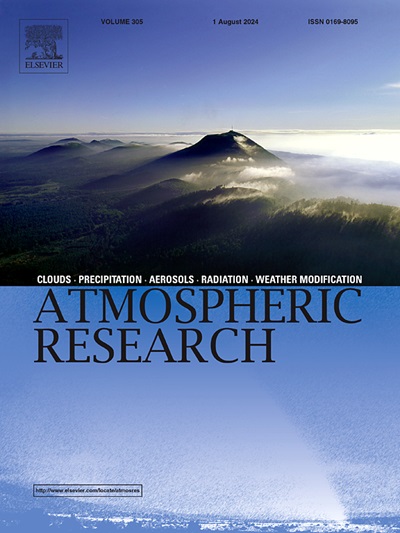Extremes of diurnal temperature range in karst regions: Definition, trends and interaction with wind speed
IF 4.4
2区 地球科学
Q1 METEOROLOGY & ATMOSPHERIC SCIENCES
引用次数: 0
Abstract
Diurnal temperature range (DTR) is an important climate indicator that exerts substantial effects on society as well as the environment, particularly on karst landforms where the ecosystem is vulnerable and sensitive to DTR. However, the space-time pattern of extremes of DTR and their relationship with wind speed over global karst regions remain poorly understood. In this study, we defined DTR extremes and investigated the spatiotemporal patterns of warm-season extremes and their relationships with wind speeds across global karst regions during 1980–2022. Our results reveal that arid zones such as the Middle East and northwestern China exhibit large long-term mean DTR and DTR extremes. There is an increase in the frequency of DTR extremes for most regions, though pronounced regional divergence of DTR trends exists. The intensity of DTR extremes show apparent increasing trends in North America and Europe, but in other regions decreased trends are prevailing. For most regions worldwide, declining wind speed trends are discerned, though slight increases are observed in the western United States. Moreover, wind speed is generally strengthened along with larger DTR. Daytime DTR extremes dominate North America, Europe and south China, while nighttime extremes are likely to occur in the Middle East and Asia. These findings advance the understanding of DTR extremes in fragile karst ecosystems, which could help for region-specific climate adaptation strategies.
喀斯特地区日温差极值:定义、变化趋势及其与风速的相互作用
日温差(DTR)是一项重要的气候指标,对社会和环境都有重要影响,特别是对喀斯特地貌生态系统脆弱和敏感的地形。然而,全球喀斯特地区DTR极值的时空格局及其与风速的关系尚不清楚。研究了1980-2022年全球喀斯特地区暖季极端值的时空格局及其与风速的关系。结果表明,中东和中国西北等干旱区长期平均DTR和DTR极值较大。尽管DTR趋势存在明显的区域差异,但大多数区域的DTR极值频率有所增加。在北美和欧洲,DTR极端事件的强度有明显的增加趋势,但在其他区域则普遍呈减少趋势。对于世界上大多数地区来说,风速下降的趋势是明显的,尽管在美国西部观察到轻微的增加。此外,风速一般随着DTR的增大而增强。北美、欧洲和华南地区主要是白天的极端DTR,而中东和亚洲地区可能出现夜间极端DTR。这些发现促进了对脆弱喀斯特生态系统中DTR极端值的理解,有助于制定特定区域的气候适应策略。
本文章由计算机程序翻译,如有差异,请以英文原文为准。
求助全文
约1分钟内获得全文
求助全文
来源期刊

Atmospheric Research
地学-气象与大气科学
CiteScore
9.40
自引率
10.90%
发文量
460
审稿时长
47 days
期刊介绍:
The journal publishes scientific papers (research papers, review articles, letters and notes) dealing with the part of the atmosphere where meteorological events occur. Attention is given to all processes extending from the earth surface to the tropopause, but special emphasis continues to be devoted to the physics of clouds, mesoscale meteorology and air pollution, i.e. atmospheric aerosols; microphysical processes; cloud dynamics and thermodynamics; numerical simulation, climatology, climate change and weather modification.
 求助内容:
求助内容: 应助结果提醒方式:
应助结果提醒方式:


